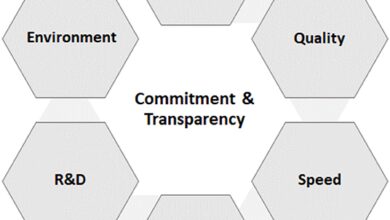How Sama Became One of Few Tech Companies Where Women Are Equally Represented at Every Level


(Image: Malambo C/peopleimages.com/Adobe Stock)
Sama put increasing the number of women in the technology industry at the center of its mission. Now, women make up 53 percent of the company’s workforce, and half of the senior managers and the executive team are women.
Sama produces computer data solutions that power artificial intelligence (AI) and machine learning models for Fortune 500 companies. And it’s giving people in Africa — particularly women and youth — a seat at the global AI table by providing meaningful work to lift them out of poverty.
“We have a belief that talent is distributed equally, but opportunity is not,” Sama CEO Wendy Gonzalez told TriplePundit. “And our goal is, basically, digital upskilling and full-time employment in underserved communities with the intent of sustainably moving people out of poverty by providing financial independence and work skills to get into the formal economy. By formal economy, I mean jobs that have salaries and benefits.”
The company’s commitment to gender equality includes continuously assessing its practices, policies and culture to identify areas for improvement and implement necessary changes. It uses third-party, unbiased evaluation to do so where appropriate. Sama also offers mentorship programs, leadership development and skill-building workshops, and incorporates gender balance, equal opportunities and pay policies from the hiring phase onward.
Gonzalez explained that Sama’s business mission is to develop more accurate and effective AI models for larger companies by providing training data and curation solutions.
“We basically help improve and drive accuracy in the data that AI models are built upon, and we do that through a combination of technology as well as a ‘human in the loop’ workforce,” said Gonzalez. “Those are our teams that are based in east Africa that help improve the quality of the models that you might use today, whether it be in your phone or on the internet, etc.”
Women make up less than a third of the world’s workforce in technology-related fields, according to a report by The World Bank. In the United States, science, technology, engineering and mathematics (STEM) jobs represent just 25 percent of the total labor force, according to the Women Tech Network. Thirty-five percent of the employees in those fields are women. And in 2023, 35 percent of the country’s tech jobs, specifically, were held by women.
Sama recently announced plans to further its work removing barriers for women in technology at all stages of their careers. Those plans include hosting lectures at secondary schools, spearheading thought leadership and tech roundtables with influential women in the tech industry, and sharing stories of inspiring women within the company and throughout the industry.
“When we started this company we were really looking at financial independence and work as the right solution towards poverty alleviation,” Gonzalez said. “We had women at the center of it because when women succeed, communities succeed. So we started with the goal of hiring at least 50 percent women. It’s not a regular practice, and it’s certainly not a regular practice in a tech company, but I’m really proud to say that 53 percent of our workforce identifies as female.”
Sama has a women’s tech employee resource group that meets regularly to support each other and discuss available resources, Gonzalez said. There’s also a mentorship program within the company that is open to everyone, not just women. Company leaders engage in discussions at universities, and Gonzalez herself often gives talks at institutions like Harvard Business School and Kenyatta University in Kenya.
Regarding talent acquisition, Sama’s talent team ensures a balanced set of candidates by focusing on inclusivity, including gender and people of color, Gonzalez told 3p. Hiring managers make the final decisions, but they receive a comprehensive list of candidates. Metrics are tracked monthly to ensure diversity goals are met without compromising the hiring managers’ autonomy to choose the best fit for the company, she said.
“It’s kind of a belt-and-suspenders approach,” Gonzalez said. “It’s provide for the right diverse candidates, let the managers do what they need to do to hire effectively, and then track that data so we can make sure we’re not getting off track.”
There are still areas where there is room for improvement, such as engineering roles, where achieving diversity is challenging, she said.
“We strive to source as many diverse candidates as possible, but the pipeline is not as robust in this field compared to others,” Gonzalez said.
To address this, Sama considers not only candidates with extensive experience but also junior candidates, she said.
“This approach helps us balance our business objectives with diversity goals, allowing us to bring in a more diverse range of candidates,” Gonzalez said. “This is one way we thoughtfully drive diversity within our organization.”
Read More



